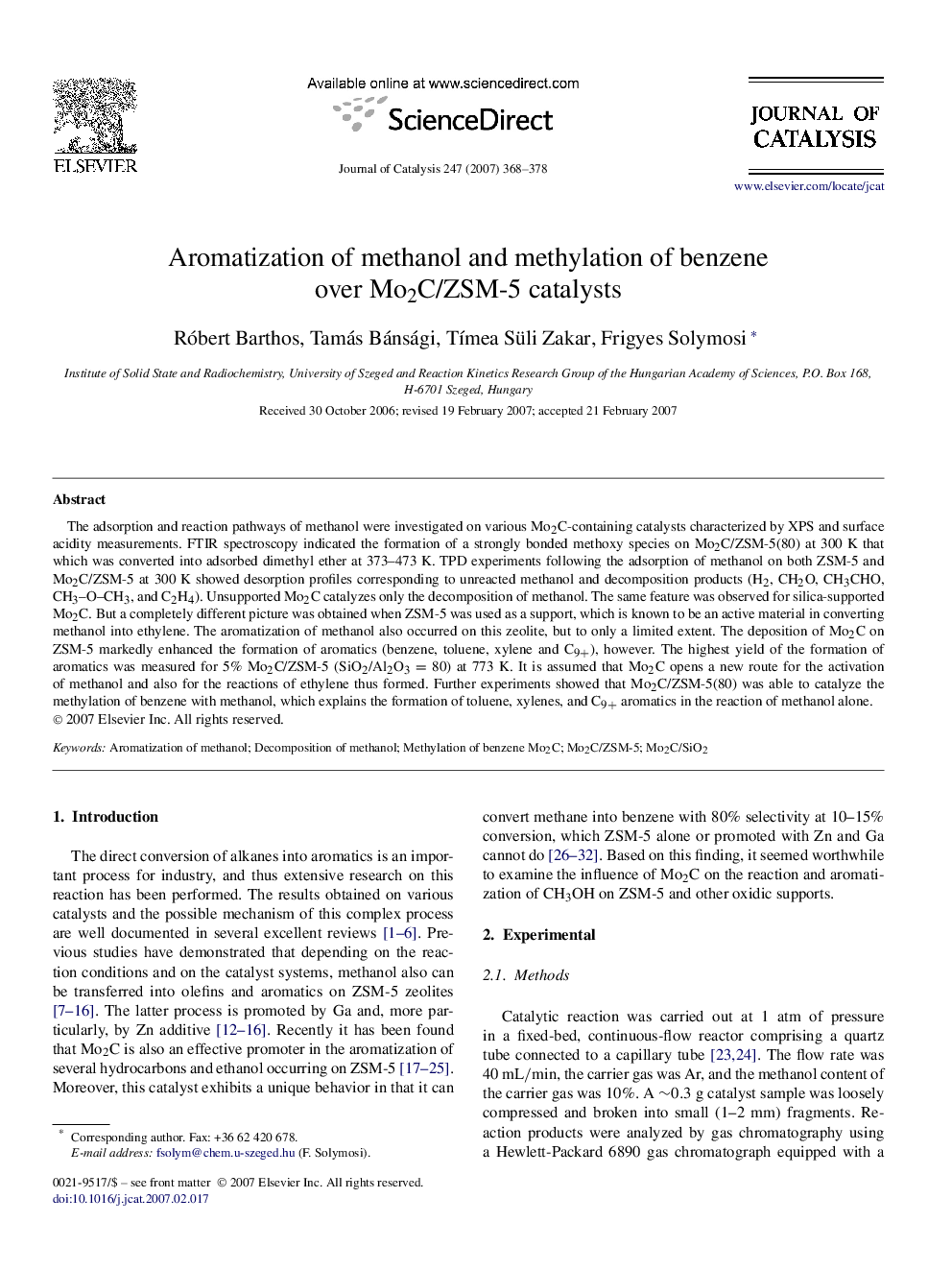| Article ID | Journal | Published Year | Pages | File Type |
|---|---|---|---|---|
| 63206 | Journal of Catalysis | 2007 | 11 Pages |
The adsorption and reaction pathways of methanol were investigated on various Mo2C-containing catalysts characterized by XPS and surface acidity measurements. FTIR spectroscopy indicated the formation of a strongly bonded methoxy species on Mo2C/ZSM-5(80) at 300 K that which was converted into adsorbed dimethyl ether at 373–473 K. TPD experiments following the adsorption of methanol on both ZSM-5 and Mo2C/ZSM-5 at 300 K showed desorption profiles corresponding to unreacted methanol and decomposition products (H2, CH2O, CH3CHO, CH3OCH3, and C2H4). Unsupported Mo2C catalyzes only the decomposition of methanol. The same feature was observed for silica-supported Mo2C. But a completely different picture was obtained when ZSM-5 was used as a support, which is known to be an active material in converting methanol into ethylene. The aromatization of methanol also occurred on this zeolite, but to only a limited extent. The deposition of Mo2C on ZSM-5 markedly enhanced the formation of aromatics (benzene, toluene, xylene and C9+), however. The highest yield of the formation of aromatics was measured for 5% Mo2C/ZSM-5 (SiO2/Al2O3 = 80) at 773 K. It is assumed that Mo2C opens a new route for the activation of methanol and also for the reactions of ethylene thus formed. Further experiments showed that Mo2C/ZSM-5(80) was able to catalyze the methylation of benzene with methanol, which explains the formation of toluene, xylenes, and C9+ aromatics in the reaction of methanol alone.
